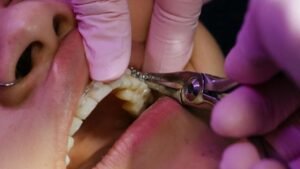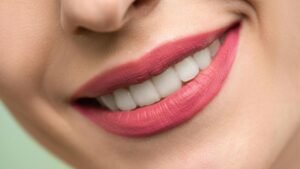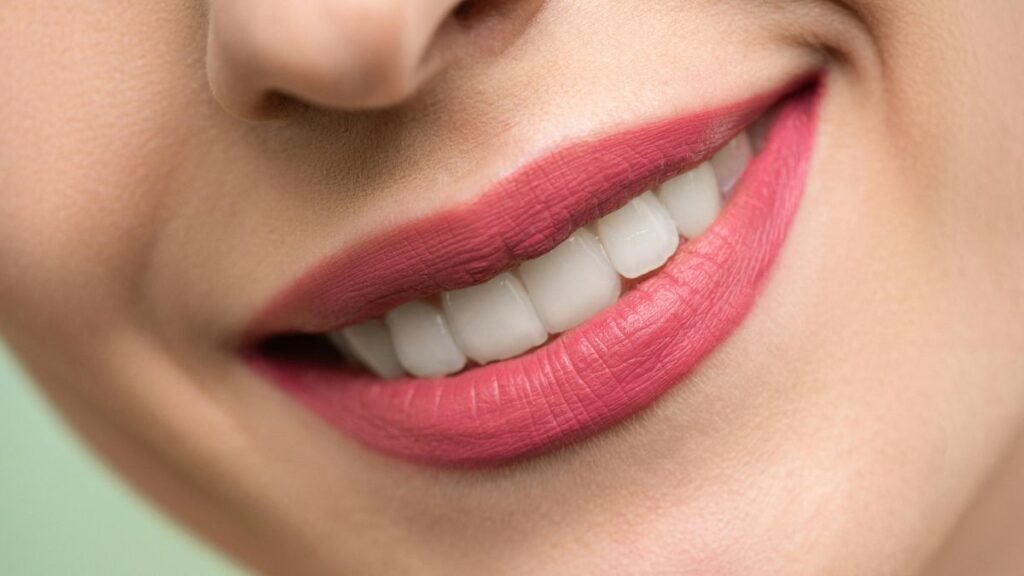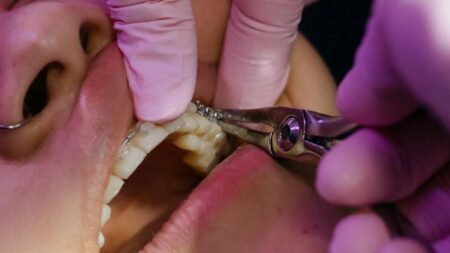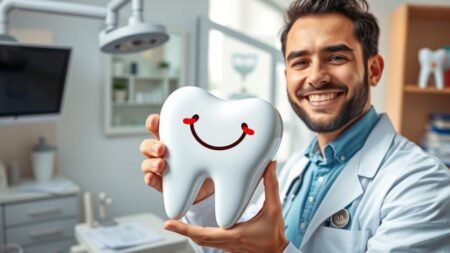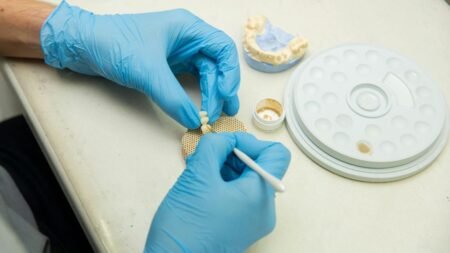Ever looked in the mirror after brushing and wondered, “Why are my teeth yellow when I brush them everyday?” You’re not alone. About 70% of adults notice their teeth yellowing, even with good oral care. This makes many question their dental routine’s effectiveness.
Brushing alone might not fight tooth discoloration well. Diet, age, and genetics also affect your teeth’s color. Even with daily brushing, teeth can stain and wear down naturally.
Let’s explore why your teeth might not stay white, even with daily brushing. Knowing the causes can help you get a brighter smile.
Natural Tooth Color and Structure
Your teeth are not naturally pure white. Their color comes from their structure, which includes enamel and dentin. Knowing this helps you understand what to expect from your smile.
The Role of Enamel and Dentin in Tooth Color
Tooth enamel, the outer layer, is naturally translucent. Beneath it lies dentin, which is yellow. This mix gives teeth their natural off-white look. As you age, your enamel gets thinner, showing more of the yellow dentin.
Why Perfectly White Teeth Are Not Natural
Perfectly white teeth are not common, even in movies. Teeth naturally yellow over time. This is due to diet, genetics, and age. Wanting unnaturally white teeth can lead to disappointment and extra dental work.
The Impact of Age on Tooth Color
As you age, your teeth naturally turn yellow. This happens because:
- Enamel wears down, exposing more dentin
- Dentin naturally darkens over time
- Years of staining foods and drinks take their toll
| Age Group | Common Tooth Color | Factors Influencing Color |
|---|---|---|
| Children | Bright white to off-white | New enamel, minimal exposure to staining agents |
| Young Adults | Off-white to light yellow | Developing habits, diet choices |
| Middle-aged Adults | Light to medium yellow | Enamel wear, accumulated stains |
| Seniors | Medium to dark yellow | Significant enamel wear, long-term stain exposure |
While whiter teeth might be appealing, your natural tooth color is unique. Focus on keeping your teeth healthy instead of aiming for perfect whiteness.
Why Are My Teeth Yellow When I Brush Them Everyday: Common Causes
Brushing your teeth every day is important for your mouth’s health. But, it doesn’t always keep your teeth white. Many things can make your teeth yellow, even if you brush them regularly. Let’s look at why this happens and how to fight it.
Poor Brushing Technique and Its Effects
Brushing well is essential for keeping your teeth bright. Research shows that 25-30% of yellow teeth come from bad brushing. Dentists say to brush for two minutes, twice a day, to get rid of plaque. Using a toothpaste made for whitening can also help keep your teeth looking good.
Staining Foods and Beverages
What you eat and drink can change your tooth color. Drinks like coffee, tea, and red wine can stain your teeth. These drinks leave pigments on your teeth, causing stains over time. To avoid stains, rinse your mouth after drinking these.
Impact of Smoking and Tobacco Products
Smoking is a big reason for yellow teeth. About 50% of smokers see their teeth turn yellow because of tobacco. The tar and nicotine in cigarettes make hard stains that brushing can’t remove.
Medication-Related Discoloration
Some medicines can stain your teeth from the inside. For example, some antibiotics can make teeth yellow or brown in 5-10% of people. This kind of stain is hard to get rid of with brushing and might need a dentist’s help.
| Cause | Percentage Affected | Prevention/Solution |
|---|---|---|
| Poor Brushing Technique | 25-30% | Brush for 2 minutes, twice daily |
| Staining Foods and Drinks | 70% | Rinse mouth after consumption |
| Smoking | 50% of smokers | Quit smoking, use whitening products |
| Medication-Related | 5-10% | Consult dentist for professional treatments |
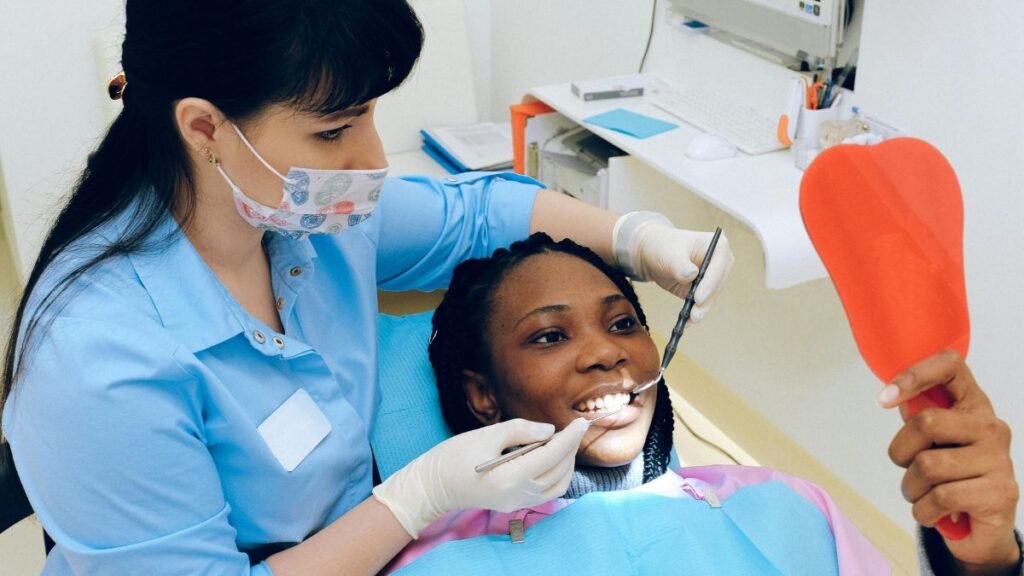
Types of Tooth Stains and Their Formation
Knowing about tooth stains is important for a bright smile. There are two main types: extrinsic and intrinsic. Each type affects teeth differently and needs special treatment.
Extrinsic Stains: Surface-Level Discoloration
Extrinsic stains are on the outside of your teeth. They make up 60% of all stains. They come from things like eating staining foods and drinks.
Coffee lovers risk staining their teeth by 67%. Red wine and soda can cause stains in 50% and 45% of users, respectively.
Intrinsic Stains: Deep Tooth Discoloration
Intrinsic stains are inside the tooth, making up 40% of stains. They can come from many things. For example, some medicines can stain teeth in kids under 8 by 10-15%.
Teeth can also stain from injuries in about 15% of kids.
The Role of Daily Habits in Stain Development
Your daily habits can really affect your teeth. Bad dental care can stain teeth in 30-50% of adults. Smoking can stain teeth in about 25% of smokers.
Age also matters, as enamel wears down at 1% per year after 30. Regular dental cleanings can remove up to 75% of stains. This shows how important good oral care is.
| Stain Type | Prevalence | Common Causes |
|---|---|---|
| Extrinsic | 60% | Food, drinks, smoking |
| Intrinsic | 40% | Medications, trauma, aging |
Professional Solutions for Yellow Teeth
If you want a brighter smile, a dental clinic is the place to go. Dentists have safe and effective ways to whiten your teeth.
In-office bleaching is a top choice. It can make your teeth up to 8 shades lighter in just one hour. For home use, dentists make custom trays. These trays give better results than store-bought products.
Professional teeth whitening can make your teeth 5-10 shades brighter after one session. This beats DIY methods. Also, about 50% of adults say a whiter smile boosts their confidence.
- In-office bleaching: Quick results in about an hour
- Custom whitening trays: Personalized for at-home use
- Professional guidance: Tailored treatment plan
- Long-lasting results: Maintain your brighter smile
Your dentist will find the best way to whiten your teeth. They’ll look at why your teeth are yellow and your dental history. With their help, you can get a dazzling smile safely and effectively.
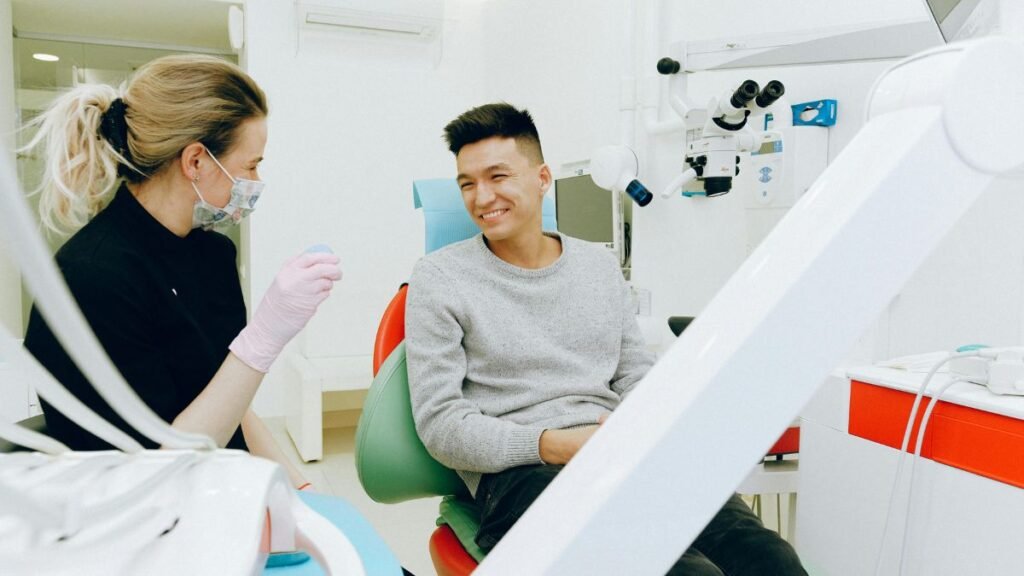
Conclusion
It’s important to know why your teeth might look yellow, even if you brush them every day. As we get older, our teeth naturally turn a bit yellow. This is because the enamel, the hard outer layer, can wear away. This exposes the yellowish dentin underneath, which is the softer layer inside the tooth.
Stains from things like coffee, tea, and red wine can also make your teeth look yellow. In fact, 90% of coffee drinkers notice their teeth getting stained. Smoking and chewing tobacco can make teeth even more discolored, affecting 75% of users. To fight these stains, brush your teeth for two minutes, twice a day, and floss regularly.
If stains are hard to get rid of, you might need to see a dentist. Veneers can last up to 15 years and can fix yellow stains. But, whitening treatments can make teeth sensitive or erode the enamel. So, it’s best to talk to a dentist before trying any whitening treatments. Taking good care of your teeth and being careful about what you eat can help keep your smile bright and healthy.
FAQ – Yellow Teeth and Whitening Tips
Why are my teeth yellow even though I brush them every day?
Teeth can turn yellow even with daily brushing. This is due to diet, lifestyle, genetics, and age. Foods and drinks that stain, bad brushing habits, smoking, and some medications can cause discoloration. As we get older, our enamel wears thin, showing more of the yellow dentin underneath.
Can brushing alone prevent tooth discoloration?
Brushing is key for clean teeth, but it’s not enough to stop all discoloration. Using the right brushing technique, flossing, and whitening toothpaste helps. But, diet and lifestyle choices also affect tooth color.
What foods and drinks cause tooth staining?
Coffee, tea, red wine, cola, and dark berries stain teeth. They have chromogens that stick to enamel. Use a straw for these drinks and rinse with water to reduce stains.
How does smoking affect tooth color?
Smoking causes severe stains on teeth. Nicotine and tar in tobacco get into the enamel, making teeth yellow or brown. Quitting smoking can make your smile brighter and improve your health.
Are there any effective home remedies for whitening yellow teeth?
Home remedies can help, but professional treatments work best. Oil pulling, baking soda brushing, or hydrogen peroxide mouthwash might work. Always check with a dentist before trying new whitening methods.
How often should I get professional teeth whitening?
How often you need whitening depends on your diet, lifestyle, and the method. Results can last from six months to two years. Talk to your dentist to find the best schedule for you.
Can certain medications cause tooth discoloration?
Yes, some medications can stain teeth. Antibiotics like tetracycline and doxycycline can discolor teeth, mainly in children. Other drugs, like antihistamines and some blood pressure medications, can also affect tooth color.
Is tooth sensitivity normal after whitening treatments?
Sensitivity after whitening is common, but it’s usually temporary. It should go away in a few days. If it lasts or is severe, see your dentist.
Can enamel erosion contribute to yellow teeth?
Yes, enamel erosion can make teeth appear yellow. As enamel wears thin, more dentin shows, which is yellow. Acidic foods, too much brushing, and some health issues can erode enamel. Good oral care and products that strengthen enamel can help.
How can I maintain the results of teeth whitening treatments?
Keep your smile bright by brushing well, avoiding stains, and quitting smoking. Use a straw for staining drinks and rinse with water. Touch-up treatments as your dentist suggests can also help.
